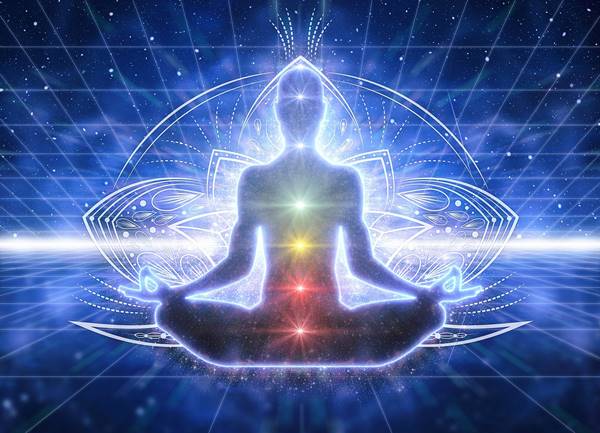In the vast realm of spiritual practices, chakra meditation holds a significant place. Rooted in ancient Indian traditions, this practice focuses on unlocking and balancing the seven energy centers within our bodies known as chakras. Derived from Sanskrit, the word “chakra” translates to “wheel” or “disk,” symbolizing the spinning vortexes of energy that exist within us. Chakras are believed to be responsible for harmonizing our physical, emotional, and spiritual well-being.

Each chakra corresponds to different aspects of our lives, such as vitality, love, communication, intuition, and more. The practice of chakra meditation aims to cleanse and align these energy centers through focused attention and visualization techniques. By engaging in chakra meditation regularly, individuals can foster self-awareness, enhance their energetic flow, release blockages that hinder personal growth, and promote overall balance.
Understanding the Seven Chakras
Chakra meditation is a practice rooted in ancient Indian philosophy that focuses on balancing and aligning the seven chakras – energy centers within the body. Each chakra represents a different aspect of our physical, emotional, and spiritual well-being. Starting from the base of the spine and moving upwards, these chakras are associated with specific colors, elements, and qualities. The Root Chakra (Muladhara) grounds us to the earth, while the Sacral Chakra (Svadhisthana) governs creativity and sexuality. The Solar Plexus Chakra (Manipura) relates to personal power and confidence. Moving higher, we encounter the Heart Chakra (Anahata), which governs love and compassion. The Throat Chakra (Vishuddha) is connected to communication and self-expression.
Benefits of Chakra Meditation
The practice of chakra meditation offers a myriad of benefits that can positively impact our physical, mental, and spiritual well-being. By focusing on the body’s energy centers or chakras, this form of meditation aims to restore balance and harmony within ourselves.
One key benefit is the ability to enhance self-awareness and self-discovery. Through chakra meditation, individuals can gain deeper insights into their emotions, thoughts, and behaviors, leading to personal growth and transformation.
Another advantage is the promotion of physical health. Chakra meditation helps to clear blockages in our energy centers, allowing for a smoother flow of vital life force energy throughout our bodies. This improved energy flow can support overall wellness by boosting the immune system and facilitating natural healing processes.
Moreover, chakra meditation is known to reduce stress and anxiety levels. By calming the mind and promoting relaxation, this practice aids in releasing tension and achieving a sense of inner peace.
How to Prepare for Chakra Meditation
Before diving into a chakra meditation practice, it is essential to create a calm and conducive environment.
Begin by finding a quiet space where you won’t be disturbed for the duration of your meditation. Dim the lights or use candles to create a soothing atmosphere. To enhance the ambiance, consider incorporating calming elements such as soft music or nature sounds.
Next, choose comfortable clothing that allows you to sit or lie down without any discomfort. It’s crucial to find a posture that promotes relaxation and aligns your body’s energy centers. Additionally, gathering any necessary props like cushions or blankets can aid in creating physical comfort during your practice.
It is advisable to set an intention or focus for your chakra meditation before starting. This intention can be related to balancing specific energy centers or cultivating overall well-being.
Step-By-Step Guide to Chakra Meditation Practice
1. Find a quiet and comfortable space where you can sit undisturbed for the duration of your meditation practice.
2. Begin by taking a few deep breaths, allowing your body to relax and your mind to calm down.
3. Close your eyes and bring your attention to the base of your spine, where the first chakra, known as the root chakra, is located. Visualize a vibrant red spinning wheel at this energy center.
4. Slowly move your attention upward to each subsequent chakra, visualizing their specific colors and associated qualities. These include orange for the sacral chakra, yellow for the solar plexus chakra, green for the heart chakra, blue for the throat chakra, indigo for the third eye chakra, and finally violet or white for the crown chakra.
Exploring Different Techniques for Balancing Chakras
There are several techniques available to balance and align the chakras, promoting overall well-being and harmony within the body.
One popular method is visualization, where individuals imagine each chakra as a spinning wheel of vibrant energy. By focusing on each chakra individually and visualizing it becoming balanced, blockages can be released.
Another technique involves sound therapy, using specific frequencies or mantras that resonate with each chakra. Sound vibrations help to clear any energetic imbalances and stimulate the flow of energy throughout the body.
Breathing exercises are also commonly used to balance chakras. By incorporating deep, intentional breaths while focusing on specific energy centers, individuals can promote the release of stagnant energy and encourage a harmonious flow within their chakras.
Additionally, certain physical activities like yoga or tai chi can help balance the chakras by combining movement with breath control.